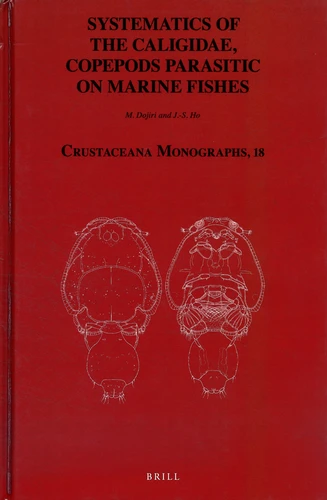Systematics of the Caligidae, copepods parasitic on marine fishes
Par : ,Formats :
- Paiement en ligne :
- Livraison à domicile ou en point Mondial Relay indisponible
- Retrait Click and Collect en magasin gratuit
- Nombre de pages448
- PrésentationRelié
- FormatGrand Format
- Poids0.985 kg
- Dimensions16,3 cm × 24,4 cm × 3,0 cm
- ISBN978-90-04-20424-9
- EAN9789004204249
- Date de parution01/06/2012
- CollectionCrustaceana Monographs
- ÉditeurBrill
Résumé
This book is a generic revision of the entire caligid family, which has not been reviewed and revised since its establishment in 1834 by Burmeister. It includes detailed descriptions of all genera within the family along with a discussion on the taxonomic status of the genera previously belonging to the Euryphoridae and compiles an extensive array of information and literature regarding "sea lice" into one book.
The external morphology, functional morphology, life history, and host-parasite relationships of the Caligidae are presented. A key to the genera of the Caligidae is provided. Because this family has become increasingly important due to their deleterious effects on fishes, especially cultured or farmed fishes throughout the world, aquaculturists have become very concerned about these "sea lice".
The external morphology, functional morphology, life history, and host-parasite relationships of the Caligidae are presented. A key to the genera of the Caligidae is provided. Because this family has become increasingly important due to their deleterious effects on fishes, especially cultured or farmed fishes throughout the world, aquaculturists have become very concerned about these "sea lice".
This book is a generic revision of the entire caligid family, which has not been reviewed and revised since its establishment in 1834 by Burmeister. It includes detailed descriptions of all genera within the family along with a discussion on the taxonomic status of the genera previously belonging to the Euryphoridae and compiles an extensive array of information and literature regarding "sea lice" into one book.
The external morphology, functional morphology, life history, and host-parasite relationships of the Caligidae are presented. A key to the genera of the Caligidae is provided. Because this family has become increasingly important due to their deleterious effects on fishes, especially cultured or farmed fishes throughout the world, aquaculturists have become very concerned about these "sea lice".
The external morphology, functional morphology, life history, and host-parasite relationships of the Caligidae are presented. A key to the genera of the Caligidae is provided. Because this family has become increasingly important due to their deleterious effects on fishes, especially cultured or farmed fishes throughout the world, aquaculturists have become very concerned about these "sea lice".


